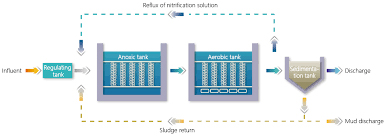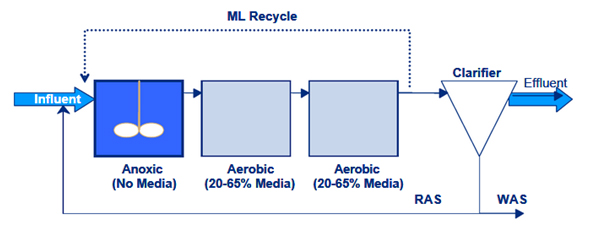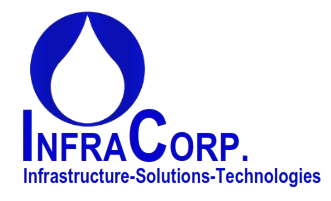BioFix™ | InfraCorp IFAS Technology™
BioFix™ is InfraCorp’s advanced Integrated Fixed-film Activated Sludge (IFAS) technology, combining suspended growth activated sludge with fixed-film carriers. This hybrid process significantly improves treatment capacity, nutrient removal, and process stability while minimizing the need for new infrastructure.
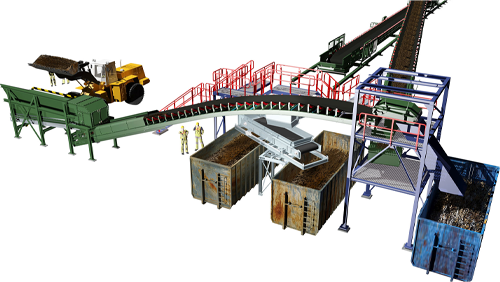
Key Features
- Hybrid process with both suspended and attached biomass.
- Increased treatment capacity without large-scale civil expansion.
- High efficiency in removing BOD, COD, nitrogen, and phosphorus.
- Retrofit-friendly: easily upgrades existing wastewater plants.
- Resilient under hydraulic and organic load fluctuations.
- Modular and scalable design for municipal and industrial use.
Applications
- Municipal wastewater plants requiring enhanced nutrient removal.
- Industrial wastewater with high-strength or variable loads.
- Existing WWTPs needing low-cost capacity upgrades.
- Space-constrained sites requiring compact biological treatment.
Benefits
- Boosts performance while reducing capital investment.
- Ensures compliance with stringent discharge standards.
- Cost-effective and rapid to implement compared to new construction.
- Complements InfraCorp’s biological solutions: BioSep™ (MBBR), MemBio™ (MBR), and Clariflo™ (clarification).
Conclusion
BioFix™ reinforces InfraCorp’sHard-to-Treat (H2T™) platform, delivering reliable and flexible biological treatment for municipalities and industries worldwide.
IFAS Process for Nutrient Removal in Wastewater Treatment Plants
Getting rid of nutrients, like nitrogen and phosphorus, is really important in wastewater treatment plants to keep water safe. The Integrated Fixed-Film Activated Sludge (IFAS) process is a smart way to do this. It mixes suspended and attached growth systems to make nutrient removal better. Microorganisms in the IFAS process grow on both floating and fixed surfaces, which helps break down nutrients more effectively. This new method helps wastewater treatment plants meet strict rules for cleaning water before it’s discharged. By making the IFAS process work better, these plants can help protect water quality and keep the environment healthy.
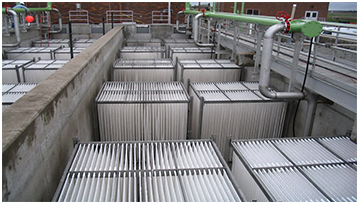
Understanding Nutrient Removal
Nutrients, like nitrogen and phosphorus, end up in wastewater from various sources such as human waste, factories, and farm runoff. If this untreated water gets into rivers or lakes, it can cause too much algae to grow, use up oxygen, and harm water life.
Conventional Nutrient Removal Processes
Traditional ways to remove these nutrients in wastewater treatment plants usually involve using both living organisms and chemicals:
1. Biological Nutrient Removal (BNR):
This method uses special tiny organisms to change nitrogen compounds (such as ammonia and nitrate) into nitrogen gas by processes called nitrification and denitrification. It also removes phosphorus by turning it into solid compounds that can be taken out as sludge.
2. Chemical Precipitation:
In this method, chemicals such as iron or aluminum salts are mixed into the wastewater. This helps create solid phosphate compounds that can be taken out by settling or filtering.
IFAS Process Overview
The IFAS process merges two methods activated sludge and biofilm, into one tank. It adds both floating and attached microorganisms to the mix. The attached microorganisms grow on special surfaces called fixed media or carriers, giving them a place to form biofilms.
Key Components of IFAS
1. Reactor Configuration:
The IFAS reactor can be designed in various configurations, such as plug flow or complete mix, depending on the specific treatment requirements and plant layout.
2. Suspended Growth Biomass:
The activated sludge component of the IFAS process provides a diverse microbial community capable of carrying out various biological reactions, including nitrification, denitrification, and biological phosphorus removal.
3. Attached Growth Biomass:
The biofilm component of the IFAS process is formed on the fixed media or carriers, which provide a stable environment for the growth of specialized microbial communities. These biofilms can enhance nutrient removal efficiency and increase the overall biomass concentration in the reactor.
4. Fixed Media or Carriers:
Various types of fixed media or carriers can be used in the IFAS process, including plastic or ceramic materials with a high surface area-to-volume ratio. These media provide a surface for biofilm attachment and growth.
Advantages of IFAS
The IFAS process offers several advantages over conventional activated sludge or biofilm processes:
-
- Enhanced Nutrient Removal: The combination of suspended and attached growth biomass in the IFAS process can significantly improve nutrient removal efficiency, particularly for nitrogen and phosphorus compounds.
- Increased Biomass Concentration: The presence of fixed media or carriers in the IFAS reactor allows for a higher biomass concentration compared to conventional activated sludge systems, leading to improved treatment capacity and smaller footprint requirements.
- Operational Flexibility: The IFAS process can be adapted to various wastewater characteristics and loading conditions by adjusting the ratio of suspended and attached growth biomass, as well as the configuration of the reactor.
- Energy Efficiency:The IFAS process often requires less aeration compared to conventional activated sludge systems, resulting in reduced energy consumption and operating costs.
- Reduced Sludge Production: The attached growth biomass in the IFAS process can contribute to a reduction in sludge production, as biofilms have a lower rate of biomass growth compared to suspended growth systems.
IFAS Process Monitoring and Optimization
To ensure optimal performance of the IFAS process, continuous monitoring and optimization are essential. Key parameters to monitor include dissolved oxygen levels, mixed liquor suspended solids (MLSS) concentration, biofilm thickness, and nutrient concentrations (nitrogen and phosphorus) in the influent and effluent streams.
Additionally, regular maintenance activities, such as backwashing or physical cleaning of the fixed media or carriers, may be necessary to prevent excessive biofilm growth and maintain efficient nutrient removal.
Conclusion
The IFAS process is becoming a popular choice for removing nutrients in wastewater treatment plants. It combines the benefits of both suspended and attached growth systems. With this method, it’s possible to improve the removal of nitrogen and phosphorus, increase the concentration of bacteria and other organisms, be more flexible in operation, use energy more efficiently, and produce less sludge. With the right planning, keeping an eye on things, and making adjustments as needed, the IFAS process can help protect water bodies and make sure wastewater treatment plants are managed sustainably.
